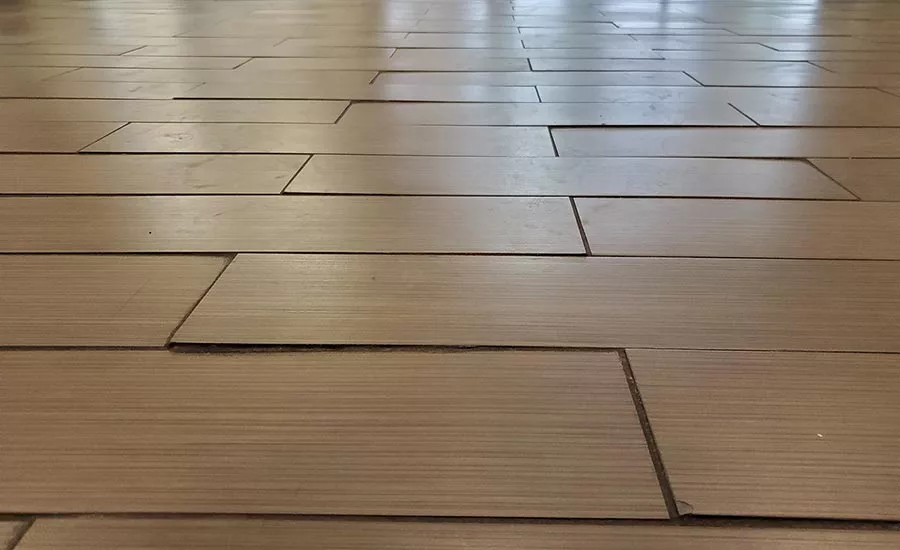CTEF Tile Tip: Tile Industry Standards Are There to Help You

Not following tile standards yields poor work.
Photo: Scott Carothers.
The standards found in the ANSI (American National Standards Institute) A108.02 document provide the installation method standards used to provide a good looking and long-lasting tile project. When they are followed, the job is headed for success, but when they are not followed, it may be doomed from the beginning.
In the attached photo, it is easy to see the errors that were made resulted in a less than pleasing appearance including lippage, chipped tile, dirt catching areas at the low points, and potential safety issues. We will explore some of the standards.
ANSI A108.02 – 4.3.7 states: “Lippage refers to differences in elevation between edges of adjacent tile modules.” It further states: “The total allowable lippage shall be calculated by adding the actual warpage of the tile supplied to the allowable lippage number in the chart.” For pressed floor and porcelain tiles with a grout joint width 1/16” to less than 1/4", the allowable lippage is 1/32”, which for perspective, is the thickness of a credit card. Given the maximum allowable warpage in this section plus the 1/32” allowance, this tile exhibits far more than permitted.
ANSI A108.02 section 4.3.8.2 Running bond/brick joint and any offset pattern states: “For running bond/brick joint or any other offset patterns (i.e. non-continuous grout joints) utilizing tiles (square and/or rectangular) where the side being offset is greater than 15 in. (nominal dimension), only patterns with an offset of 33% or less shall be specified. If a pattern with an offset greater than 33% is desired, the specifier and owner must approve a mock-up and the resulting lippage.” The tile shown was installed at a 50% offset which is beyond the requirement and magnified the lippage problem.
The result of the above standards not being followed yields the noted problems along with three additional issues, two of which are bothersome while the other constitutes a very real safety concern. When the tilework is not flat, the resulting high spots are venerable to chipping as seen in the foreground of the photo while the low spots create dirt-catching areas that always appear dingy. However, the significant issue in this tilework is safety. If someone walking across the floor trips on a high tile, falls, and is injured, the tile installer, along with others involved in the project, may and most likely will be responsible for the injured parties’ medical bills. This could potentially be a very expensive situation. Think about it.
It is clearly seen from these industry standards that if followed, this floor could have been pleasing to the eye and safely stood the test of time. But when ignored, the result gives the tile industry another black eye. Use the standards to your advantage and everyone wins!
Looking for a reprint of this article?
From high-res PDFs to custom plaques, order your copy today!






